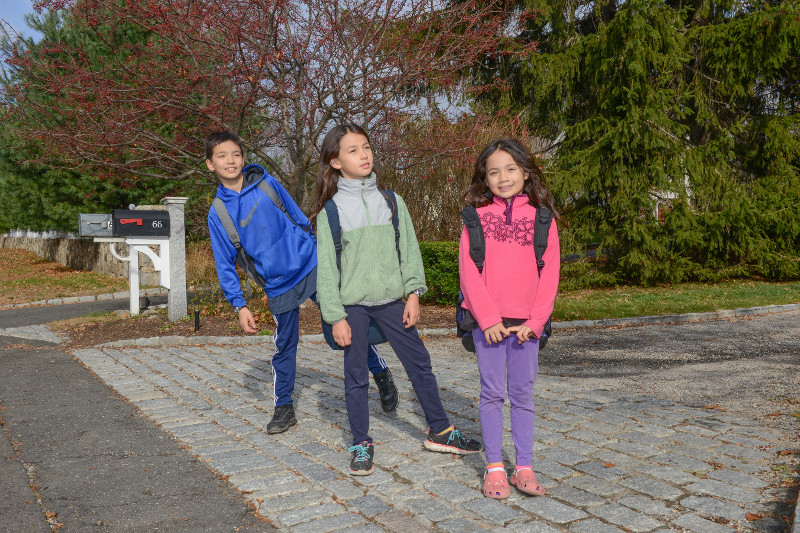
When I first moved to my new home in Connecticut I was thrilled to see that our suburban setting still featured sidewalks. I imagined my two girls walking or biking the 1.4 mile distance to their elementary school. It was almost the same distance we had walked (girls on their scooters) to school in the city. Oddly, no one in our immediate new neighborhood seemed to let their kids walk or bike to school, and a couple of months into our new home I found out why: The sidewalk was narrow and on many occasions tree roots had dismantled the asphalt. It made biking—especially on a smaller sized kid’s bike—hazardous. Even worse, pedestrian crossings were missing at busy intersections, so I couldn’t feel good about letting the girls do this on their own at all. The girls got on the school bus on most days and for early morning events I would drive them to school the same as everyone else. I thought that this is just the way things are in suburbia and gave up.
At my recent talk in the city of New Haven I was thrilled to learn about the Safe Routes to School (SRTS) initiative. Safe Routes to School is a national initiative aimed at helping and encouraging children all over the US to walk and bike to school.
 At GoKid this concept is close to our hearts. While we are a carpooling app, one of our core goals is to reduce emissions in order to give this and future generations cleaner air to breathe and a healthier planet to live in. Walking and biking are fantastic ways to accomplish these goals and SRTS is working hard to encourage children and parents to embrace this mode of short-range travel by promoting Walk and Bike to School days, hosting transportation education events, and partnering with local law enforcement to create a safer environment.
At GoKid this concept is close to our hearts. While we are a carpooling app, one of our core goals is to reduce emissions in order to give this and future generations cleaner air to breathe and a healthier planet to live in. Walking and biking are fantastic ways to accomplish these goals and SRTS is working hard to encourage children and parents to embrace this mode of short-range travel by promoting Walk and Bike to School days, hosting transportation education events, and partnering with local law enforcement to create a safer environment.
And most importantly, schools can apply to the program and have an engineer evaluate the actual route to school. The program will pay for the assessment of roads, will comment on missing crossroads, signs and the speed of cars. The program works with the schools and assesses the outcome of the initiative.
It turns out that as more and more cars are on the road, there is not only increased risk of accidents with pedestrians and bikes, but the traffic congestion negatively impacts air quality, making walking and biking less healthy than they should be. However, by working together communities and schools can promote healthier and more environmentally conscious travel in their children, starting from a young age.
After learning the details of the program I finally didn’t feel alone in my own thinking and will introduce this program to our own schools.
When walking or biking aren’t options—due to distance, weather, or other factors—GoKid can come in to make driving to school as environmentally friendly, easy, and inexpensive as possible. When communities work together, we can all find a “greener way to go.”







0